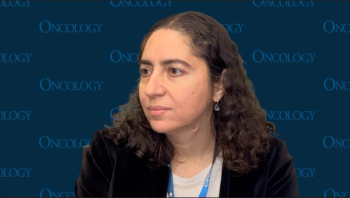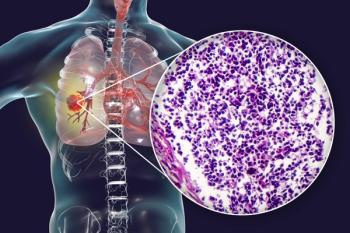
Fitting Radioligands Into the Metastatic Prostate Cancer Treatment Paradigm
Data support the use of radioligand therapy in combination with androgen receptor pathway inhibitors to optimize prostate cancer outcomes.
For Praful Ravi, MB, BChir, MRCP, radioligand therapies (RLTs) are chess pieces on a treatment chessboard that includes androgen receptor pathway inhibitors (ARPIs) and taxane-based chemotherapy.
In an interview with CancerNetwork®, Ravi, medical oncologist at the Lank Center for Genitourinary Oncology at the Dana-Farber Cancer Institute, discussed how his team integrates RLTs into clinical practice for metastatic prostate cancer, as well as any evidence supporting their use in combination therapies for the disease.
He began by outlining the current landscape for prostate cancer treatment, which is comprised of RLTs, ARPIs, and taxane-based chemotherapy. For patients with hormone-sensitive disease, first-line care primarily consists of androgen deprivation therapy (ADT) with ARPIs with or without chemotherapy doublet or triplet therapy, with RLTs considered in the second-line setting. Furthermore, he explained that multiple features affect whether he uses an RLT alone or as part of a combination, including disease avidity, intensity, and expression.
Ravi highlighted post-hoc findings from the phase 3 VISION trial (NCT03511664), which revealed that patients with metastatic prostate cancer who were treated with an ARPI in combination with 177Lu-PSMA-617, an RLT, had comparatively better outcomes vs 177Lu-PSMA-61alone.1 Data from the phase 2 ENZA-p trial (NCT04419402) further displayed that ARPIs might upregulate PSMA expression among these patients, although the data were weak.2
In his own practice, Ravi continues the use of ARPIs when he initiates RLT use to improve outcomes in the absence of adverse effects or financial toxicity. He concluded by saying that ongoing clinical trials are evaluating RLT-based combinations for prostate cancer, including at Dana-Farber, to bolster outcomes for these patients.
Transcript:
I view radioligand therapy as a chess piece on the chessboard. I tell patients that, for prostate cancer, we have 3 therapy buckets. We have the hormonal agents—ARPIs; we have taxanes—chemotherapy; and then we have the RLTs. We think about what the right time is to use each one. Right now, in the hormone-sensitive setting, there is no approved indication for RLT. That space is really ADT plus ARPI, or ADT plus ARPI plus chemotherapy—the doublet or triplet approach. Generally, in that progression after first-line therapy for hormone-sensitive diseases is when I start thinking about RLT. I use features such as the extent of avid disease, whether the patient's symptomatic or not, how high the expression is, and how intense the target is––those types of features decide if now is the right time, post-ARPI or post-triplet, to use RLT vs another agent or to think about a clinical trial, in terms of combinations.
The way RLT––177Lu-PSMA-617, at least––was studied, it was done in the [phase 3] VISION trial, either alone or patients could be on an ARPI with it, and in [the phase 3 PSMAfore trial [NCT04689828], it was done alone. Generally speaking, we tend to prescribe it alone, but there is increasing data that [using] it in combination with an ARPI might improve the outcomes further. There are some weak data that an ARPI might upregulate [prostate-specific membrane antigen (PSMA)] expression and therefore enhance the response to PSMA-targeted therapy, or PSMA RLT. This was seen in the ENZA-p study. There's also post-hoc analysis from the VISION trial showing that patients who had a concurrent ARPI with [177Lu-PSMA-617] did slightly better than those who did not.
In general, if I have a patient who is on an ARPI already, and I am thinking about moving to [177Lu-PSMA-617], I think about continuing that, just in case it might improve the outcomes, as long as it's not causing extra [adverse] effects [or] is not financially toxic to the patient. We start thinking about combinations. There's increasing interest and study of combinations with RLT, ongoing clinical trials, including things that we are doing at our own institution, to look at this, and to see how we can optimize 177Lu-PSMA-617 and PSMA RLT even further.
References
- Armstrong AJ, Sartor O, de Bono J, et al. Association of declining prostate-specific antigen levels with clinical outcomes in patients with metastatic castration-resistant prostate cancer receiving [177Lu]Lu-PSMA-617 in the phase 3 VISION trial. Eur Urol. 2024;86(6):552-562. doi:10.1016/j.eururo.2024.08.021
- Emmett L, Subramaniam S, Crumbaker M, et al. [177Lu]Lu-PSMA-617 plus enzalutamide in patients with metastatic castration-resistant prostate cancer (ENZA-p): an open-label, multicentre, randomised, phase 2 trial. Lancet Oncol. 2024;25(5):563-571. doi:10.1016/S1470-2045(24)00135-9
Newsletter
Stay up to date on recent advances in the multidisciplinary approach to cancer.




















































































